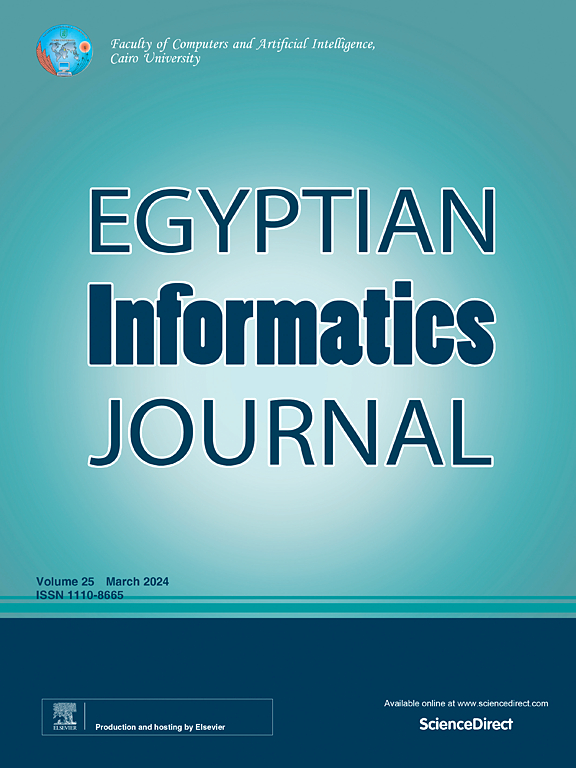Analytical residual network architecture with semi-supervision for sonar-based ship classification in underwater defense systems
IF 4.3
3区 计算机科学
Q1 COMPUTER SCIENCE, ARTIFICIAL INTELLIGENCE
引用次数: 0
Abstract
Sonar-based ship classification is vital for underwater defense systems, enabling effective surveillance, threat detection, and autonomous navigation. However, challenges such as high noise levels, low resolution, and complex acoustic scattering in sonar data necessitate the use of advanced algorithms. This study aims to develop a novel semi-supervised framework, Attention-ResNet, to enhance ship classification accuracy by integrating residual networks (ResNets) and attention mechanisms, thereby leveraging both labeled data (LD) and unlabeled data to address the scarcity of LD. The proposed Attention-ResNet framework combines ResNets with attention mechanisms to improve feature extraction and discriminative capability. It processes sonar signals as single-channel images, utilizing skip connections in ResNets to learn complex acoustic features and attention gates to focus on relevant signal regions. The framework is evaluated on two benchmark sonar datasets, DeepShip and ShipsEar, using semi-supervised learning with only 25% LD. Ablation studies assess the contributions of ResNet and attention components in both the image domain (ID) and audio domain (AD). The Attention-ResNet framework achieves a classification accuracy of 70.17% on the test dataset, a 10.59% improvement over the baseline. The alternative Attention-ResNet_2 architecture further improves accuracy to 71.92%, a 12.34% enhancement. Comprehensive ablation studies confirm the synergistic effect of ResNet and attention mechanisms in enhancing classification performance in both ID and AD. The Attention-ResNet framework demonstrates significant improvements in sonar-based ship classification, offering a robust solution for underwater surveillance and navigation systems. Its ability to leverage unlabeled data makes it particularly suitable for scenarios with limited LD. Future work will explore its application to diverse datasets and real-world implementations to enhance its practical utility further.
基于半监督的水下防御系统声呐舰船分类分析残差网络结构
基于声纳的舰船分类对于水下防御系统至关重要,能够实现有效的监视、威胁探测和自主导航。然而,声纳数据中的高噪声水平、低分辨率和复杂的声散射等挑战需要使用先进的算法。本研究旨在开发一种新的半监督框架attention - resnet,通过整合残差网络(ResNets)和注意力机制来提高船舶分类精度,从而利用标记数据(LD)和未标记数据来解决LD的稀缺性问题。所提出的attention - resnet框架将ResNets和注意力机制结合起来,以提高特征提取和判别能力。它将声纳信号作为单通道图像处理,利用ResNets中的跳过连接来学习复杂的声学特征,并利用注意门来关注相关的信号区域。该框架在DeepShip和shipsear2个基准声纳数据集上进行了评估,使用仅25% LD的半监督学习。烧烧研究评估了ResNet和注意力组件在图像域(ID)和音频域(AD)中的贡献。Attention-ResNet框架在测试数据集上实现了70.17%的分类准确率,比基线提高了10.59%。另一种Attention-ResNet_2架构进一步将准确率提高到71.92%,提高了12.34%。综合消融研究证实了ResNet和注意机制在增强ID和AD的分类性能方面的协同作用。Attention-ResNet框架展示了在基于声纳的船舶分类方面的重大改进,为水下监视和导航系统提供了强大的解决方案。它利用未标记数据的能力使其特别适合LD有限的场景。未来的工作将探索其在不同数据集和现实世界实现中的应用,以进一步增强其实际效用。
本文章由计算机程序翻译,如有差异,请以英文原文为准。
求助全文
约1分钟内获得全文
求助全文
来源期刊

Egyptian Informatics Journal
Decision Sciences-Management Science and Operations Research
CiteScore
11.10
自引率
1.90%
发文量
59
审稿时长
110 days
期刊介绍:
The Egyptian Informatics Journal is published by the Faculty of Computers and Artificial Intelligence, Cairo University. This Journal provides a forum for the state-of-the-art research and development in the fields of computing, including computer sciences, information technologies, information systems, operations research and decision support. Innovative and not-previously-published work in subjects covered by the Journal is encouraged to be submitted, whether from academic, research or commercial sources.
 求助内容:
求助内容: 应助结果提醒方式:
应助结果提醒方式:


